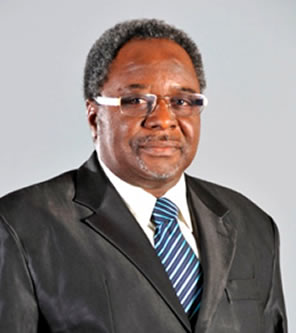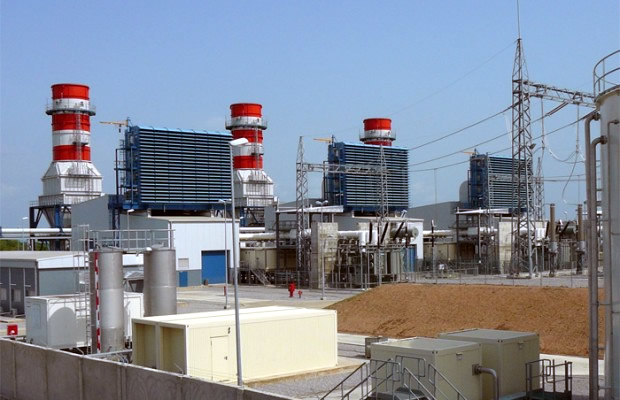How much electricity can Nigeria’s gas produce? For how many years? In this interview, energy expert Professor Abubakar Sambo beams the spotlight on Nigeria’s gas reserves, the current rate of gas utilisation and the relevant gas infrastructure, pointing out that gas is a finite resource like oil.
Interview:
Professor Abubakar Sambo: Based on information from the Energy Commission of Nigeria, the Central Bank of Nigeria and the National Bureau of Statistics, the volume of Nigeria’s gas reserves stands at about 182.3 trillion standard cubic feet (scf). These are proven reserves. The cost of this gas, if estimated at international prices of between 2.6 and 3 US dollars per thousand scf, is between 474 and 547 billion US dollars. But in Nigeria, it is sold for less at about 1 US dollars per thousand scf. Therefore, the worth of Nigeria’s gas reserves is about 182.3 billion USD locally.
NEF: So in terms of megawatts (MW) of power, how much electricity can Nigeria produce from the gas reserves present?
Sambo: In Nigeria, there are different ways of using gas. If standard gas turbines are used for generating power, there is an efficiency of only about 30%. If combined cycle gas turbines are used, the efficiency could be between 50% and 70%. Also the quality of the gas is a major factor; that is, whether it is wet gas or dry gas, in which case wet gas is gas that has some impure components and as such cannot be used as it is. Before wet gas can be used it has to be purified. Therefore, for a given volume of wet gas, a lesser volume is what would actually be combusted to produce electricity after the purification has been done.
Now, understanding that gas in different parts of the country has different purity levels and the type of gas turbine used has an influence on how many MW of electricity can be fired by a given volume of gas, the simplest way to look at the power generation potential of Nigeria’s gas reserves is by considering the country’s gas utilisation. Daily, about 7.1 billion scf is produced for all of Nigeria’s gas utilisation, this includes all sectors of the economy, including local users and gas exports. Out of this 7.1 billion scf, 3.4 billion scf is sold to Nigerian industries, including the power sector and others such as petrochemicals, plastics, fertiliser manufacturing plants, especially the big ones around Lagos area who depend on gas as production inputs. Out of this 3.4 billion scf sold daily to industries, about 60% is sold to, and used by, the power sector i.e. all of Nigeria’s gas-driven power generation plants. These power plants produce about 2600 MW of what we generate in the country today. From this, the volume of gas that is put into each MW of electricity produced can be inferred. But one thing to note also is that, of the 7.1 billion scf, just over 1 billion is sold internationally as gas exports. So, it is possible that about 2.7 billion scf of gas is being rejected back into the gas wells daily, since there is no knowledge of whether the remaining gas volumes are sold to any other local firms and industries.
|
Our Daily Gas (as at September 2016) 7.1 bn standard cubic feet (scf): gas production 2 bn scf: sold to power sector, powering about 2,600 megawatt 1.4 bn scf: sold to Nigerian industries (petrochemical, plastic, fertiliser industries etc) 1 bn scf: sold as exports 2.7 bn scf: re-injected into gas wells??? |
NEF: Why do you think that the gas is being re-injected? Is there any technical need for doing so? And how long are the reserves expected to last?
Sambo: No, I think it is because the country is not ready to fully utilise the gas being produced. Given these figures, and generating about 2,600 MW, Nigeria’s gas reserves will last for about 70 years.
But if we are to make headway as a country, we need to get the National Integrated Power Project (NIPP), which includes 11 gas-fired power stations being handled by the Niger Delta Power Holding Company, working. These power stations are virtually ready and they are expected to contribute an additional 5,000 MW to 6,000 MW, therefore increasing the combined capacity of all the power plants in Nigeria to between 11,000 MW and 12,000 MW. So all together, there are now about 20 gas power stations in Nigeria. If all of these gas power stations are to be supplied with sufficient amounts of gas, then we need a total of about 10 billion scf daily, instead of the current 7.1 billion scf. This will of course reduce the number of years our gas reserves will last. And added to this, if we consider piping gas to other business establishments, other industries such as petrochemicals, fertiliser producing companies, then the gas in Nigeria will last only about 40 to 45 years.
NEF: So, in short, as we continue to use more gas, the less the number of years we can expect the gas reserves would last?
Sambo: Exactly. But there is also another important thing to consider, though slightly controversial. In the oil and gas industry, the more prospecting that is done, generally the more finds of new reserves can be made. In fact, there are many inland basins in the country: Ondo basin, Benin basin, Enugu basin, Anambra basin, Lake Chad Basin, Upper Benue Trough, Bida Basin and the Sokoto Basin. And even now as we talk, Niger, Chad and Cameroon are producing oil and gas from their respective countries’ portions of the Lake Chad basin. Nigeria also has the potential to find gas in this basin. There is also the Upper-Benue Trough in Bauchi and Gombe, which has not been properly explored for gas. Therefore, despite the fact that our actual proven reserves may be exhausted within the next 40 to 45 years given increasing utilisation, we could get an additional 30 to 60 percent more of what we have now with proper oil and gas prospecting, and as such add about 20 or more years to how long Nigeria’s gas reserves will last. All the same, gas is a depleting resource – it will finish, no matter how much prospecting we continue to do. If we are really serious about taking care of the power and energy needs of our children and grandchildren, then we have to do something more sustainable.
NEF: In your opinion, when do you see these NIPP projects coming on board and becoming operational?
Sambo: They have been completed fully, at least 10 of them, and the arrangement for their sales through the Bureau of Public Enterprise has been completed for these 10, out of 11. But the sales agreements could not be closed – and that is the terminology that they are using.
NEF: The sales agreements could not be closed?
Sambo: Yes, and that is because the gas to fire them is not available.
NEF: We’ve been talking about how Nigeria has so much gas in trillions of standard cubic feet. How come they could not get gas to fire them?
Sambo: To begin with, when the government conceived and awarded contracts for these gas power stations provisions for the gas to fire them were not made at that time until when the stations had reached advanced stages of completion. For example, for each of the power stations, the source of gas ought to have been identified – where is the gas coming from?, and then arrangements also ought to have been made with gas providers, and to also award contracts for laying the pipelines to connect the gas to the power stations. These were not done. And even while the projects took so many years, we were asking these questions. But all the focus was on completing the projects. Now that the projects have been completed, it has become clear that they need to source for gas, and that these arrangements have to be made now. This is the main reason why the project has been delayed. Thankfully, now the sources of gas for the stations have been identified; but just before the agreements were to be closed, a fresh problem sprang up – gas pipelines were being blown up here and there by militants. And this is also another reason why the project cannot be said to be fully completed for now.
NEF: If you were to mention three problems why the Nigerian gas sector has not developed to its full potential in solving the country’s power supply, what would those problems be and how can they be tackled?
Sambo: Number one problem is that we have not yet adopted the implementation of our National Gas Master Plan. For me, I think that most of the challenges in the power sector are related to non-implementation of the master plan. Also related to that, we are not making optimal use of gas; gas is still being flared, and some are possibly still being re-injected into the wells. The actions in the gas master plan have to be implemented, and these actions also include increasing our gas reserves margin by prospecting for more gas in gas-rich basins of the country. And also importantly, the government should restructure NLNG (Nigerian Liquefied Natural Gas) project to make more money for Nigeria from increased gas exports. Finally, for sustainable electricity generation in this country, one electricity source is not enough. Although gas is important, we cannot continue to depend on gas alone. We need to create an expanded energy mix. If we do this, then we will be on our way to getting adequate and reliable electricity supply in our country.
Interviewer:
Emmanuel Taiwo
Research and Liaison Officer,
Alliance on Nigeria's Energy Future
 Professor Sambo is a Professor of Energy Studies at Usmanu Danfodiyo University, Sokoto; the Chairman of the Nigerian Chapter of the World Energy Council; and was formerly the Director-General of the Energy Commission of Nigeria (ECN).
Professor Sambo is a Professor of Energy Studies at Usmanu Danfodiyo University, Sokoto; the Chairman of the Nigerian Chapter of the World Energy Council; and was formerly the Director-General of the Energy Commission of Nigeria (ECN).




